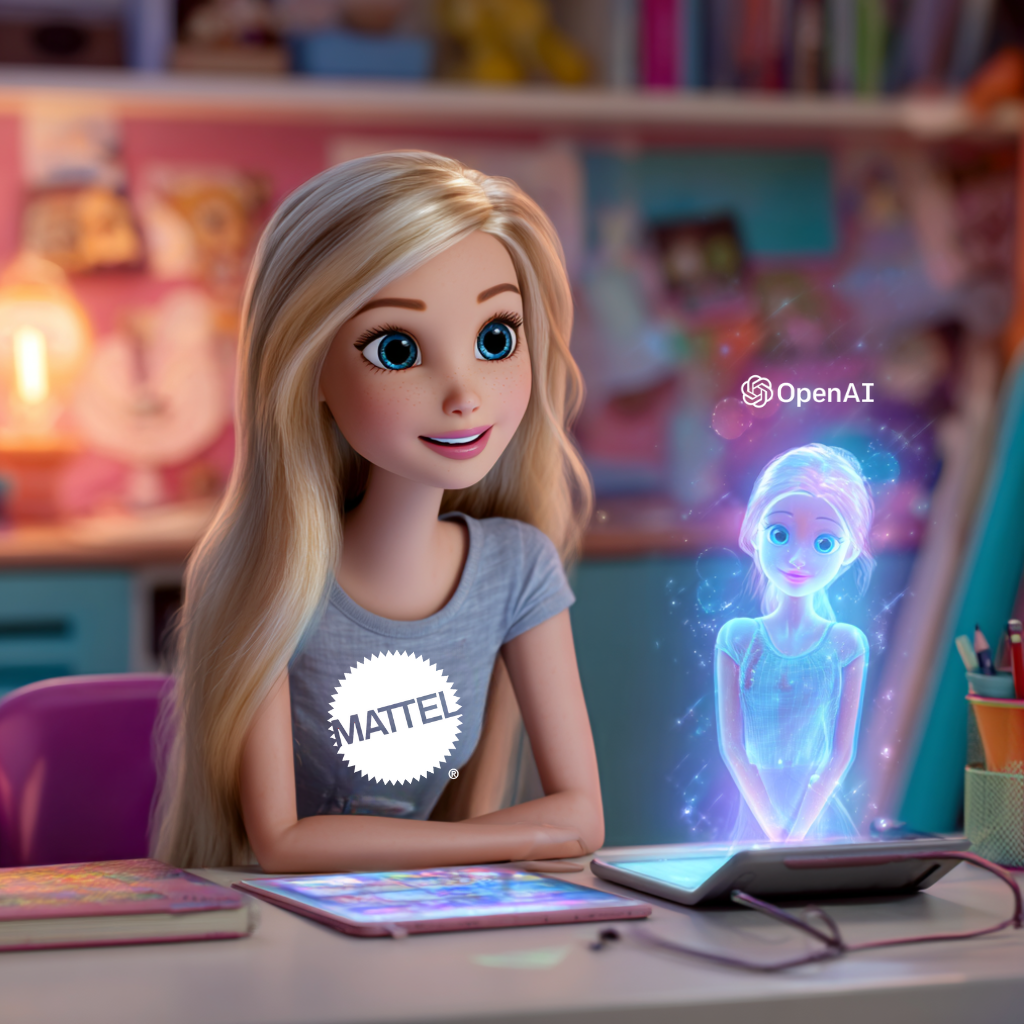When conversational AI turns toys into interactive companions
Can the iconic toy of the 1960s become a conversational agent of the future? At the 2025 edition of VivaTech, Mattel unveiled a strategic partnership with OpenAI to equip its future toy ranges – starting with Barbie – with conversational intelligence based on ChatGPT models. An initiative that inaugurates a new era in the toy industry: that of embodied AI.
This collaboration raises a number of questions: what kind of embedded intelligence will these toys offer? How will data security and interaction with young audiences be managed? And above all, what consequences could this shift have on the educational, emotional and commercial uses of connected toys?
Towards a new generation of cognitive toys
Mattel’s announcement is not just a gadget feature. It is part of a profound transformation of the toy sector, in which artificial intelligence is becoming a central building block of product innovation.
According to a study by Juniper Research, the global market for smart toys is expected to exceed $35 billion by 2030, with average annual growth of 12%.1. By providing a personalized version of GPT adapted to children’s language, OpenAI aims to transform playful interaction into genuine dialogue.
Barbie will be able to :
- Answer children’s questions in natural language, in an age-appropriate tone.
- Telling personalized, improvised stories based on a name or place chosen by the child.
- Stimulate early learning (language, vocabulary, logic) in a playful environment.
- Memorize preferences to create emotional continuity between game sessions.
New use cases for generative AI in toys
This partnership opens up a multitude of usage scenarios, far beyond the simple “talking toy”:
- Language learning: by responding to children in several languages, Barbie becomes a vehicle for multilingual learning.
- Emotional development: a Barbie able to ask questions, validate emotions or propose imaginary stories encourages self-expression.
- Augmented role-playing: by adapting its voice and speech to different contexts (doctor, astronaut, veterinarian), AI enriches symbolic play.
- Social compensation: for isolated or disabled children, these interactive dolls could play a cognitive or emotional support role.
AI designed for a sensitive audience
However, integrating artificial intelligence into an object designed for children raises critical issues. OpenAI and Mattel have announced several safeguards:
- Enhanced content filtering: the embedded version of GPT will have stricter filters than those available in conventional versions, blocking all inappropriate content.
- Partial offline mode: certain functions will operate without connection to limit data collection.
- Active parental consent: each device must be activated by an adult via a dedicated application.
According to an MIT Media Lab study published in April 2025, 68% of American parents say they are open to AI-enabled toys, provided strict parental control is guaranteed2.
From toys to personalized learning agents?
More broadly, this partnership could herald the arrival of hybrid toys combining storytelling, learning and personalized interaction. Several start-ups, such as Cognimates, Embodied and Roybi AI, are already developing companion robots with adaptive cognitive capabilities. Barbie’s worldwide fame could accelerate the adoption of this new standard.
We are thus witnessing the emergence of a new techno-cultural object: the cognitive toy, combining affect, narration and simulated intelligence. This convergence also raises questions of sovereignty and regulation: which AIs will be on board? Where will the data be stored? Who will control the language models?
The convergence of AI and the cultural industry
This project also marks a strategic convergence between generative AI and the entertainment industry. Mattel is already considering other licenses (Hot Wheels, Polly Pocket) that could benefit from AI voice interfaces. For its part, OpenAI is exploring a B2B business model for its customizable agents, already tested with ChatGPT’s “GPTs” mode.
In a logic of co-design, certain dialogues could be enriched with narrative elements from partner studios, in the image of conversational storytelling co-written by AI and human authors. In this way, we move away from simple gadgetry and into a logic of AI-enhanced transmedia.
A new toy frontier… to be framed
Conversational artificial intelligence transforms Barbie into an interactive interface, capable of nurturing narratives, emotions and learning. The challenge is to harness these new capabilities to make them tools for emancipation, not alienation.
How can we train children to distinguish between reality and conversational fiction? How can these objects be integrated into educational settings? What technical and ethical standards should be imposed on the industry? These questions will be at the heart of upcoming debates.
References
1. Juniper Research. (2024). Smart Toy Market Trends 2024-2030.
https://www.juniperresearch.com/researchstore/innovation-disruption/smart-toys
2. MIT Media Lab. (2025). Parental Attitudes toward AI-Enabled Toys.
https://www.media.mit.edu/publications/ai-toys-report-2025

